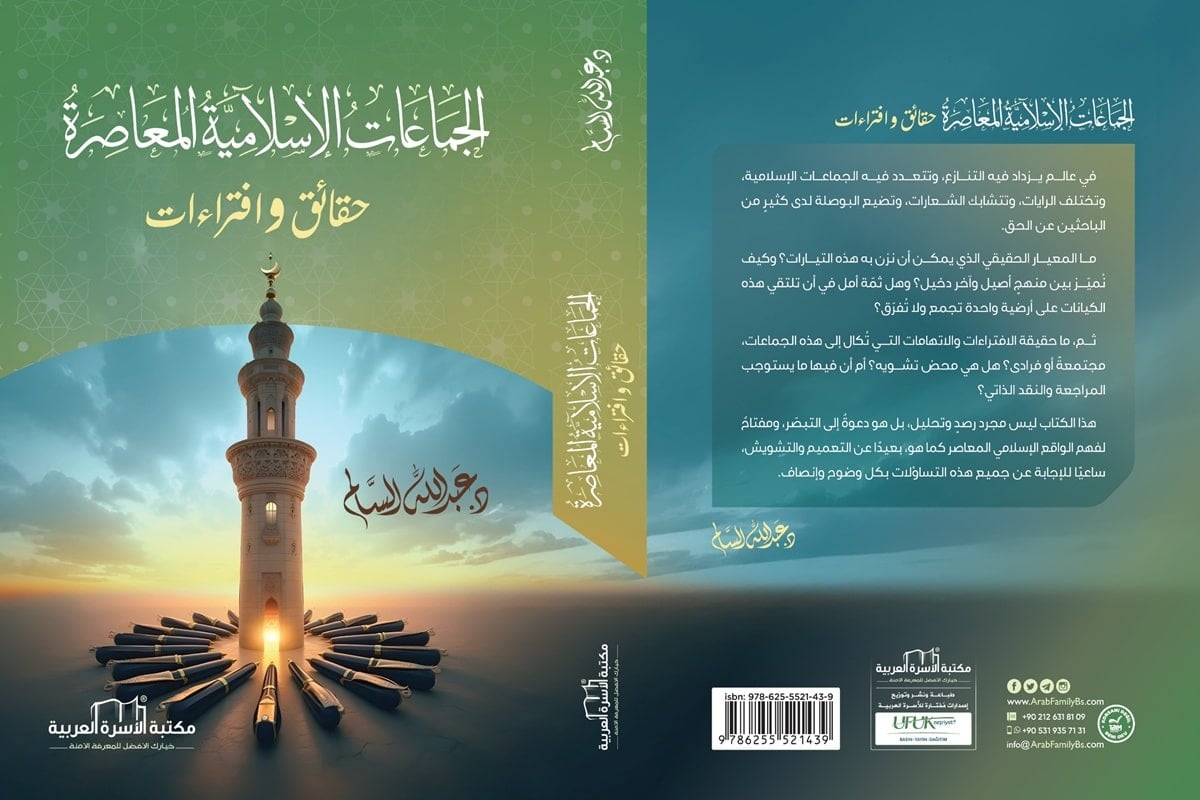
Book Data
Title: Contemporary Islamic Movements: Facts and Fabrications.
Author: Dr. Abdullah Al-Salem. Publisher: Arab Family Library, Istanbul. Year: 2025. Field: Islamic Thought. Length: 440 pages (medium size).
This overview highlights the main insights of the book and presents contemporary Islamic movements through a clear, accessible, and research-based style suitable for online readers and SEO standards.
Classification Criterion
In its first part, the author studies thirteen Islamic groups, tracing key figures, events, and milestones, while separating verified facts from widespread fabrications.
The book classifies contemporary Islamic movements according to their political engagement: those avoiding politics, those pursuing peaceful activism, and those involved in armed struggle.
Groups that Avoid Politics
This category covers trends focusing on creed, ethics, and preaching: Saudi Salafism, Ansar al-Sunnah al-Muhammadiyyah, the Jami school, and Tablighi Jamaat. Each is examined within its historical context and its role among modern Islamic groups.
Groups with Peaceful Political Activism
These include the Muslim Brotherhood, the Sururi (Sahwa) current, and Hizb ut-Tahrir al-Islami. The book compares their approaches to reform, institutional work, and political participation, showing internal diversity among Islamic movements.
Groups with Armed Political Activity
Examples here are Jama‘at al-Muslimin (Egypt), al-Jama‘ah al-Islamiyyah, the Islamic Movement in Sudan, al-Qaeda, ISIS, and Hamas. Dr. Al-Salem explains how conflict environments influence the image of Islamic groups in global media.
Accusations and Fabrications
The second part examines common accusations against many Islamic movements rather than any single one. When an allegation has partial truth, the author acknowledges it objectively. Topics include fundamentalism and renewal, claims of harming Islam, and charges of exploiting religion or serving foreign powers.
The discussion extends to rebellion against rulers, degrees of defiance, and classical rulings on obedience, then to takfir — defining its boundaries and clarifying that declaring disbelief does not imply violence. The final chapter analyzes the term “terrorism,” contrasting its politicized use with the legitimate concept of jihad.
Future of Contemporary Islamic Movements
The third section addresses certain points of agreement and disagreement among the Islamic movements, followed by a forward-looking vision regarding the future of contemporary Islamic movements.
Translation Plan
The book has not yet been translated, though plans are underway for English, French, and Turkish editions. This will allow broader understanding of Islamic groups based on evidence rather than stereotypes.


